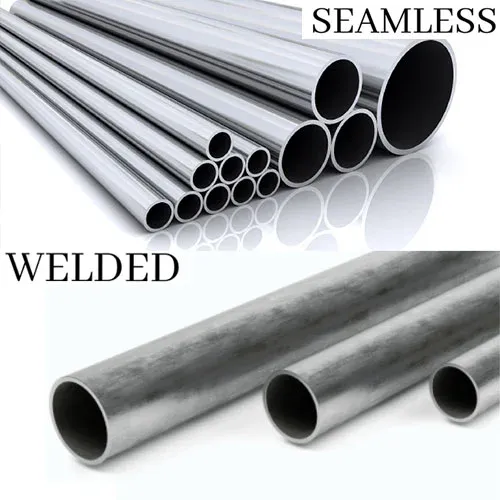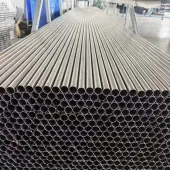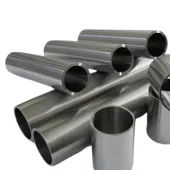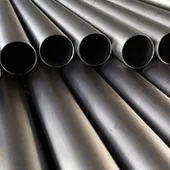
Seamless vs. Welded: Understanding Titanium Tubes Manufacturing
When specifying titanium tubes for a project, one of the most fundamental decisions is choosing between seamless and welded construction. While both offer the benefits of titanium, their manufacturing methods result in different performance characteristics and costs, making each suitable for specific applications.
Let’s break down the key differences to help you select the right type of titanium tube.
Seamless Titanium Tubes
As the name implies, seamless tubes have no weld seam. They are manufactured from a solid titanium billet that is heated and then extruded or pierced to form a hollow tube.
- Manufacturing Process: A solid, round billet is forced through a die over a piercing mandrel, creating a uniform, continuous tube.
- Advantages:
- Superior Strength & Pressure Rating: The uniform structure without a weld seam makes them ideal for high-pressure and high-stress applications.
- Enhanced Corrosion Resistance: No weld means no potential for localized corrosion or weaknesses along a seam.
- Best For: Critical applications like aerospace hydraulic lines, high-pressure heat exchangers, and subsea equipment where failure is not an option.
- Consideration: Generally more expensive due to the more complex manufacturing process.
Welded Titanium Tubes
Welded tubes begin as a flat strip of titanium (sheet or plate), which is roll-formed into a tube and then welded along the longitudinal seam.
- Manufacturing Process: A flat strip is passed through a series of rollers that gradually form it into a circular shape. The edges are then joined using a high-energy welding process (like TIG, Laser, or Plasma), often followed by annealing.
- Advantages:
- Cost-Effective: The manufacturing process is more efficient, making them a more economical choice.
- Tighter Wall Thickness Tolerances: Since they start from precisely rolled flat stock, welded tubes can often have more consistent wall thickness.
- Wide Range of Sizes: This method allows for a very wide range of diameter-to-wall-thickness ratios.
- Best For: Lower-pressure and structural applications like automotive exhausts, architectural frames, and many industrial piping systems.
- Consideration: The weld seam is a potential point of weakness or corrosion if not manufactured to the highest standards.
Comparison at a Glance
| Characteristic | Seamless Tubes | Welded Tubes |
|---|---|---|
| Pressure Rating | Highest | Good to High |
| Corrosion | Uniform Resistance | Seam is a factor |
| Cost | Higher | Lower |
| Wall Uniformity | Good | Excellent |
| Best Use | Critical/High-Press | General/Structural |
Choosing the Right Grade
Whether seamless or welded, common grades include:
- Grade 2: The industry workhorse for corrosion-resistant applications.
- Grade 5 (Ti-6Al-4V): For high-strength structural tubes.
- Grade 9 (Ti-3Al-2.5V): Offers a good compromise between the strength of Grade 5 and the weldability/formability of Grade 2, often called the “workhorse” for aerospace tubing.
Making the Right Choice: The decision between seamless and welded titanium tubes comes down to the demands of your application. For maximum integrity under pressure, seamless is the clear choice. For most structural and general fluid transfer needs, welded tubes offer excellent performance and value.
Quick Contact
Related Products
-

Titanium Tubes
Titanium Tubes

